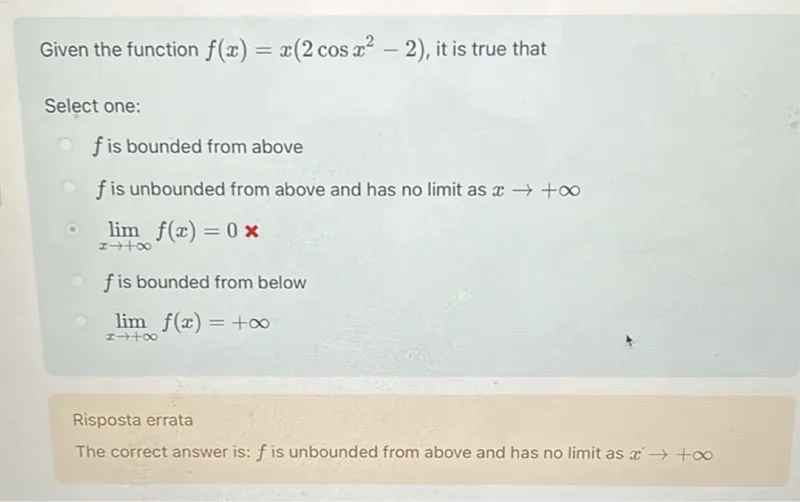Questions: Given the function (f(x)=x(2 cos x^2-2)), it is true that Select one: (f) is bounded from above (f) is unbounded from above and has no limit as (x rightarrow+infty) (lim x rightarrow+infty f(x)=0) (f) is bounded from below

Transcript text: Given the function $f(x)=x\left(2 \cos x^{2}-2\right)$, it is true that
Select one:
$f$ is bounded from above
$f$ is unbounded from above and has no limit as $x \rightarrow+\infty$
$\lim _{x \rightarrow+\infty} f(x)=0$
$f$ is bounded from below





